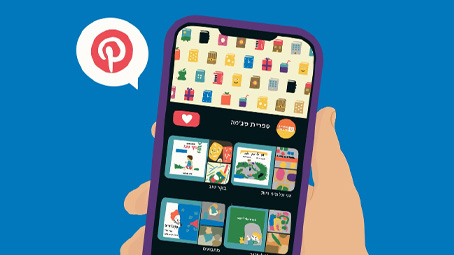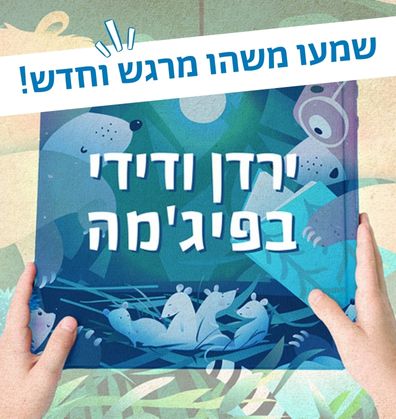כִּשּׁוּרֵי חַיִּים
שיתוף פעולה
כשכל אחד תורם מיכולותיו למען מטרה משותפת, עולה השלם על סך חלקיו. עם מגוון ספרים על שיתוף פעולה תוכלו לעודד שיח פורה בנושא, לעסוק בהזדמנויות וגם באתגרים הכרוכים בכך ולסייע לילדים לפתח מיומנויות חשובות לחיים.
סְּפָרִים
Book-Related Family Activities

ללכת לאיבוד
הפחד שילכו לאיבוד מעסיק ילדים רבים. תוכלו לשוחח על כך ולשתף גם בחוויות שלכם כילדים. תוכלו לשאול את הילד או הילדה: האם הלכת פעם לאיבוד או איבדת משהו שהיה יקר לך? איך הרגשת? מה אפשר לעשות כשזה קורה?

המחיזו את הסיפור
תוכלו להמחיז את הסיפור ולהיהפך לרגע לאדם ולנבחן המחפשים זה את זה. אחרי שתמצאו ותתאחדו אחד עם השני, תוכלו להמשיך בהצגה ולדמיין מה יקרה בהמשך, כשהבוקר יעלה.
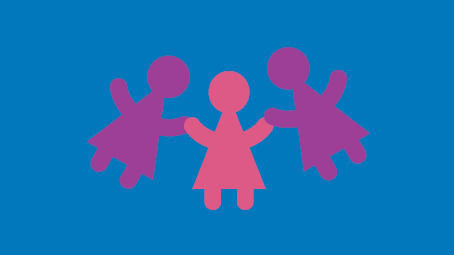
מציירים ומחפשים
בהשראת האיורים העשירים ציירו יחד ציור משפחתי גדול ומלא בפרטים. לאחר מכן שחקו במשחק חיפושים – בכל פעם מישהו יבחר פרט וכולם יצטרכו לחפש אותו, למשל, “היכן מסתתרת נעל אדומה?”

ממטלה למשחק
גם מטלה יומיומית כמו סידור הבית יכולה להיהפך למשחק מהנה. בהשראת חבריהם של אדם ונבחן הִפכו לסיירת להשבת חפצים אבודים למקומם. כדי להיכנס לאווירה אפשר להכריז ב”מכשיר הקשר” על צעצועים שמחפשים את דרכם למקום.

למה לקרוא עם ילדים שכבר קוראים?
צפו בסרטון מיוחד להורים – למה לקרוא עם ילדים שכבר קוראים?

על הספר
המסע שעוברים הילד אדם וכלבו נבחן בניסיון למצוא זה את זה נוגע ברגשות שילדים רבים יזדהו עימם – החשש לאבד או ללכת לאיבוד, התמודדות עם אובדן, געגוע וקשר עמוק בין אנשים ובעלי חיים.
שתי נקודות המבט בספר משקפות מה עובר על כל אחד מהצדדים, ומסייעות לטפח אמפתיה. הדמויות מצליחות להתמודד עם משבר בעזרת דמיון ובעזרת קהילה תומכת שמיישמת ערכים כמו עזרה לזולת והשבת אבדה.

משוחחים על הספר
שאלות לפני הקריאה
- משמעות שם הספר: “תוכלו לעמוד על ההבדל בין המילה ‘אבד’ למילה ‘עבד’?”
- השערות: “על מה ידבר הספר? אילו רמזים אפשר למצוא בכריכה?”
שאלות מתווכות לאורך הקריאה כדי לסייע לילדים להבין את העלילות המתרחשות במקביל, לדוגמה:
- בסוף העמוד שבו הכלבים יוצאים לחיפושים: “מה קורה בזמן שהכלבים מחפשים את אדם?”
שאלות לשיחה בעקבות מפגשים חוזרים עם הספר:
- איך לדעתכם הרגיש אדם כשלא מצא את נבחן? אילו מחשבות עברו לו בראש לדעתכם?
- איך הרגיש נבחן כשלא מצא את אדם?
- מה עזר להם להתמודד עם המצב?
- קרה לכם פעם שהלכתם לאיבוד או שמישהו או משהו יקר לכם הלך לאיבוד? איך הרגשתם?
- למה לדעתכם הילדים והכלבים הצטרפו לחיפושים?
- איך הרגישו אדם ונבחן כשעזרו להם?
התייחסות לעמודים שבהם אדם ונבחן מדמיינים זה את קורותיו של זה
- מה רואים באיורים? האם כל הדברים האלו התרחשו באמת?
- למה לדעתכם אדם ונבחן מדמיינים את זה?
- מה אתם הייתם מדמיינים?
- איך דמיון יכול לעזור לנו ברגעים קשים?

העולם דרך עיניים של בעל חיים
נקודת מבטו של נבחן יכולה להוות השראה להתנסות משעשעת בכיתה. אפשר להקרין או להראות תמונות של חיות במצבים שונים – למשל חתול שרודף אחרי הזנב של עצמו (ברשת רצים הרבה סרטוני חיות מצחיקים) – ולהזמין את הילדים לנסות לדמיין מה בעל החיים חושב או מה היה אומר לו היה מדבר.

להתמצא בסביבה
תוכלו לקיים מערך שיעורים בנוגע לתפיסה מרחבית של הסביבה הקרובה:
1. הקרינו על מסך את סביבת בית הספר כפי שהיא נראית במפת גוגל, או שרטטו את מפת בית הספר. אפשר לעבור על שמות הרחובות הסמוכים, ולהזמין את הילדים להצביע על המסלול מהבית שלהם עד לבית הספר. לאחר מכן אפשר לעבור לתצוגת סטריט ויו ו”לשוטט” בסביבת בית הספר.
2. חלקו את הכיתה לקבוצות קטנות, שכל אחת מהן תכין דגם או ציור של השכונה או סביבת בית הספר. גם אפשר לחלק למקטעים ולחבר הכול לדגם משותף.

מה זה "במקביל"
הכותבת נוקטת טכניקה של שתי עלילות המתרחשות בו בזמן. כדאי להמחיש את המושג “במקביל”, ולהזמין את הילדים לשלב אותו במשפטים.
תוכלו להיעזר בשיר “זה מה שקרה” מתוך הסדרה “ילדי בית העץ”, המביא כמה נקודות מבט על אירוע מסוים.
הספר מציג תמונת ראי – אדם ונבחן עושים את אותם הדברים. תוכלו לקיים משחק שבו בכל תור שני ילדים עומדים זה מול זה ועושים את אותן התנועות; או לשחק ב”מלך התנועות”, שבו ילד אחד מתנדב לצאת מהכיתה, שאר הילדים בוחרים מלך שכולם מחקים את תנועותיו, וכשהילד חוזר עליו לנחש מי מלך התנועות.

חיות המחמד שלנו
בקשו מההורים לשלוח סרטונים ותמונות של חיות המחמד של המשפחה (אם אין בבית אפשר לבקש של מישהו מהמשפחה המורחבת או מהשכנים). תוכלו לערוך בכיתה חידון זיהוי או להזמין את הילדים לספר על חיות הבית שלהם.
הילדים יוכלו לכתוב טקסט קצר על חיית המחמד שלהם ולצרף לתמונה, ולאחר מכן תכינו בכיתה קיר “חיות הבית שלנו”.

לוח מודעות של כיתה א'1
הכינו לכיתה לוח מודעות.
דמיינו שאיבדתם משהו חשוב או אהוב – צעצוע, תיק, חיית מחמד או אפילו ספר!
כמו בספר “אבד כלבלב”, עכשיו תורכם לכתוב מודעה שתעזור לכם למצוא את האבדה.
הוראות לכתיבת מודעה קצרה וברורה שתעזור לאנשים להבין:
- מה איבדתם (מה זה ואיך זה נראה – צבעים, גודל, מרקם וכדומה).
- איפה איבדתם (רחוב, מקום, גן וכדומה).
- מתי זה קרה (יום, שעה בערך).
- מה מיוחד באבדה (למה היא חשובה לכם).
- מה על המוצא לעשות (למי עליו לפנות, איך הוא יכול לעזור).
אפשר להוסיף ציור של האבדה כדי שהמודעה תהיה ברורה ומושכת את העין.
טיפ:
התחילו במילים כמו “אבד לי…”; “נעלם לי…” וסיימו במילים: “אם מצאתם, בבקשה…“

העשרה לשונית - אומר מילים ומיומנויות השוואה
הסיפור כתוב בשפה עשירה, וזו הזדמנות נהדרת להתעכב על מילים כמו “חוטמו”, “הצטיידו”, “דלועים”, “קולר” ועוד.
אפשר להתייחס למילים הללו תוך כדי קריאה, ואחר כך להכין חידון – מילה ופירושה; או משחק זיכרון – מילה וציור.
הסיפור גם מזמן לשפר מיומנות השוואה:
מה דומה ושונה בין המודעות, בין המקומות שעליהם חשבו הילד והכלב ובין אופני החיפוש.

בית מארח
מחפשים רעיון לבית מארח? אפשר בפיג’מה!
בקשו מהילדים להביא את העותק האישי שלהם מהבית, והתחילו את הפעילות כשכל ילד וילדה מחזיקים בעותק שלהם לזמן קריאה משותף. הילדים יכולים לחלק את העמודים ביניהם ולקרוא בעצמם, או שאתם תקראו יחד איתם. בשיח שלאחר הקריאה מומלץ להיעזר בשאלות המוצעות בסוף הספר וגם בהצעות לצוותים.
מפת דרכים
כל ילד יצייר את הדרך שעשה מהמקום שממנו הגיע. המפה לא צריכה להיות מדויקת, ואפשר להציע לילדים להוסיף לה ציוני דרך, כגון עצים, מכולת, גן שעשועים. הילדים יוכלו להציג את סיפור הדרך שלהם בעזרת המפה.
חידון חיפושים
החביאו במרחב הבית בובות של בעלי חיים כמספר הילדים. בכל פעם תקראו לילדים חידה שרומזת למיקום, למשל: “חפשו בעלי חיים פרוותי במקום שבו עולים ריחות בישולים ועוגות במגירה הנמוכה ביותר”. הילדים יתייעצו באופן קבוצתי על פתרון החידה, ואחרי שיחליטו על מקום אפשרי ישלחו נציג אחד למצוא את המבוקש.
מבוך רצפה
שרטטו על הרצפה מסלול פשוט בעזרת נייר דבק, סרט בד דק או חוט צמר. בכל פעם אחד המשתתפים “ילך לאיבוד” בעזרת כיסוי עיניים וכמה סיבובים במקום. שאר חברי הקבוצה (או מישהו אחד בכל פעם) יצטרכו לכוון אותו ליציאה בעזרת הנחיות בלבד, בלי לדרוך על קווי המסלול.
Discussion – At times like Donkey, other times like Rabbit
We all have a dreaming side and a practical side. You can recall some memories and share: When have you ever behaved like Rabbit? Or like Donkey? Have you ever imagined or dreamt of something and then taken steps to make your dream come true? Have you ever joined a friend in making someone happy, or creating something together?

And how would you make Elephant happy?
Imagine your very own dream celebration: What would you like to have? A cake made of clouds? Perhaps a performance by singing animals? Now, try to be more practical, and use the things around you: How about making a crown out of pegs? Or a present out of plasticine?

Taking a close look at the illustrations
You can look for the snail hiding in the illustrations together. It’s a great way to learn to pay attention to details.

A Rhyme
Rabbit writes a poem for his friend Elephant. You can let it inspire you to write your own delightful rhyme and gift it to a beloved friend or relative.
QR code
Scan the code to listen to the amusing birthday episode of Didi and Yarden’s podcast.

Family Reading Advice
Discovering books at our own pace:
Toddlers connect to books by touching them, opening and closing them, playing, looking at the illustrations, and so on. Some will listen to the entire story, while others prefer to start with a single page and gradually get used to reading more at their own pace. You can pateintly read a little more every day until, little-by-little, books become friends!

Discussion – The Sounds of my Neighborhood
You can imagine what is going on in your neighborhood or down the street right now and talk about it: What can we hear from outside? What are the children in nearby houses saying right now? What kinds of sounds are the animals making?

Musical Reading
You can add various musical instruments to your reading, or improvise using household items such as a pot and wooden spoon.

Composing Tunes
Try to come up with your very own family tune – each of you can contribute a sound to your shared melody. You can then repeat it over and over again, faster or slower, louder or quieter. Great fun is guaranteed!

Looking at the Illustrations – The Secret of Small Details
This book contains unique and interesting illustrations. You can focus on a page at a time – describing the characters, looking for the instruments and animals, while discovering more and more details.

Arts & crafts, songs, and other activities can be found on the Sifriyat Pijama Pinterest page.

טיפ לקריאה משפחתית
אפשר להפוך את הקריאה לזמן איכות משפחתי. הַזמינו בני משפחה לשעת סיפור משפחתית וחמימה ואם תרצו – צרפו ילדים נוספים. כל אחד מהמשתתפים יקבל תפקיד: אחת תבחר את הסיפור, אחר יעביר עמודים, אחת תכין תה ואחר יגיש כיבוד, ויחד תחוו רגעים של חיבור והנאה.

מיריק שניר
מיריק שְׂניר, ילידת 1948, היא משוררת וסופרת ילדים אהובה ועטורת פרסים שכתבה עד כה יותר ממאה ספרי ילדים ופעוטות. כתיבתה הייחודית הופכת חוויות ילדות יומיומיות לקלאסיקות ישראליות המלוות ילדים רבים לאורך שנים.

קריאה ומשחק דמיון
משחקי דמיון מפתחים את יכולתם השפתית של פעוטות ומעודדים אותם ליצור חוויות ממעשים פשוטים ויומיומיים. בעקבות הסיפור תוכלו לשחק יחד, להקריא סיפור לבובה העייפה ואולי להפוך את השמיכה או את הכריות לאוהל.

בית מקופסה
גם אתם יכולים להכין בית מקופסת קרטון. כדאי לשתף את הפעוטות ולשאול: מה עושים בבית? מה חשוב שיהיה בו? אם הבית שהכנתם מספיק גדול, תוכלו אפילו לשבת בו ולקרוא סיפור.

סיפור בתנועה
בסיפור משובצים פעלים רבים המדגישים את העשייה המשותפת של הילדים. תוכלו להשתעשע ולקרוא את הסיפור תוך עשיית פעולות “בכאילו” באמצעות תנועה המדגימה כל פעולה, למשל לפתוח את הדלת, לפרושׂ שטיח או לשתול פרחים, ולאפשר לפעוטות לחקות את התנועות שלכם.


Holes in the Boat
At home, much like the Schlofnoche’s boat, there are problems, or ‘malfunctions’ at times, that require a joint effort to solve. After reading the story, you can discuss and think together: In what situations does our family need to come up with an idea or solution? When is a joint effort needed? When do we realize there is a problem but only discuss it without trying to resolve it? And which ‘bird’ can ‘save’ us in such instances?

Family challenge
At the end of the story, in the absence of an appropriate solution, “Four Schlofnoche huddled on top of one small cabinet”.
You can also have fun finding out: How many family members can huddle together on one small carpet? Or a hammock? Or anywhere else you choose. Try coming up with creative ideas and solutions together to help with this challenge.

Creating creatures with funny names
What sort of funny name is Schlofnoche? Do you have any more ideas for similarlyfunny names? The whimsicalinos? Or sillynillies? You can come up with imaginary and amusing creatures of your own. Imagine them, draw them, color them, and then decide on a long and funny name for them.
Listen to the Schlofnoche’s Story
You can listen to the Schlofnoche’s story by watching this video.

Family reading advice
Children enjoy looking at illustrations and noticing details that do not necessarily appear in the story itself. While reading, you should join them, look at the book together, and discover how the illustrations add fun and amusement to the written text and shared reading experience.

Enjoying the sunset
The characters in this book are friends who enjoy watching the sunset on the beach together. You can also go to the beach, park or even the street to enjoy the beauty of the sky as the sun disappears. You should also take some paper and crayons along to draw a sunset of your own, or any other beautiful thing that can be admired simply by taking a look around you.
A discussion on our house
All houses consist of walls, a roof, doors and windows: What’s special about your house? What makes it your home? You may want to discuss special objects and items found in your home, or the things you do there together.
A video – House of boxes
What can you do in a house made of boxes? Scan to QR code to get ideas for a house that’s both real and imaginary.
Arts & crafts – Home building
How about making a house out of blankets, cardboard boxes, sticks and clothespins? And what else would you need? Decide on a location and workplan, gather the necessary items and accessories, and off you go!
A game of house catch
Take turns announcing a topic and having all the other players try to work together to find a suitable item. For instance, when “red” is announced, all players must search the house for a red item. In the next round, another player might call out “big”, “small”, “cute”, “old”, “multicolored”, “annoying” or “wheel”, sending the other players to look for an item matching their announced topic.
פינטרסט
Pinterest
Arts & crafts, songs and other activities are available on the Sifriyat Pijama Pinterest
Reading and hugging
While reading a story, you can hug each time a new animal joins the group. You can also play the hugging game: move away from each other, count “three, four,” and then run to each other, and hug!
It’s crowded but that doesn’t matter!
Invite the rest of the family to sit together with you on the couch, on the carpet or on a mattress. You can also include dolls or pets. Sit close together, then further away, and check: how pleasant is the closeness?
What sound do I make?
How does a dog bark? How does a cat meow? and how does a cow moo? – Toddlers can join can join in to the animals in the story.
Would you like to bring another animal in? And what sound would that animal make?
Sing about cabbage
“I sat on a cabbage” is a song that you can sing, add movements to, dance to and clap your hands to.
The song will upload when you scan the code:
QR – I Sat On a Cabbage – Scan the code and sing together!
Discussion
Which perfect gift would you like to get for your birthday? How would you feel if you did not get it? Have you ever wanted something very badly but did not receive it? This book prompts us to discuss our expectations – why this specific gift? Do we really need it or are we simply jealous because we saw someone else has it? You may also want to discuss disappointments, and the things that help us cope with them.
Perfect gifts
How well do you know members of your own family, and what do you think would be the perfect gift for them – would it be something you buy or an experiential gift, such as time spent together, or perhaps a trip somewhere? How about playing a game and finding out? In each round, all participants try to guess what one participant would really like to get as a gift. Those whose guesses are the closest win… the perfect family hug.
A human car game
Whoever said only cars drive round and round with a cord attached? People could too! Two of you could hold the two ends of a long cord, leading one another left, right, backwards and forwards. If you get tired, make a pit stop, and start again.
Time together
“A car with Dad is the perfect gift”. And what would you consider to be the perfect gift? What would you like to do with your father or other family members? You could fix broken items, build or assemble something, or perhaps draw, bake, plant, or dance together. In fact, you can do whatever you want, as long as you get to spend time together.
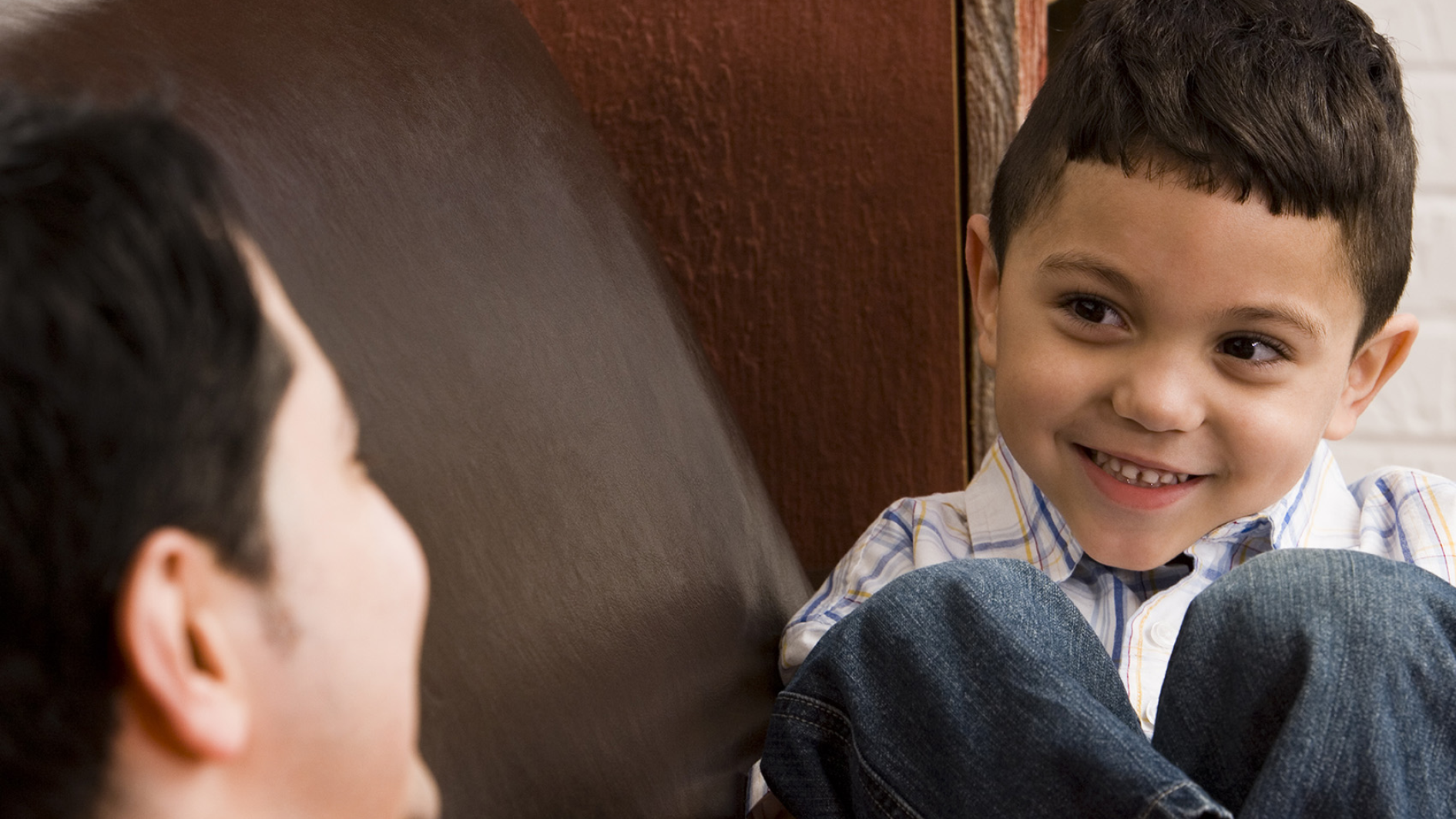
Discussion – With someone and on my own
What can we do on our own? What’s better done together? You may want to discuss the things we can do with others with your child, and then come up with the things that they can do themselves. Who do they enjoy sharing experiences with? Family members? Friends? Perhaps their pet?

A game – On one foot
Can you also stand on one foot? Let’s check!
Throw a die, stand on one foot and count to the number shown on the die: One, two, and… Are you about to fall? Reach out and allow whoever is next to you to help you stay upright.

Cooperation
You may enjoy putting a list together of all the activities that are best done together, in collaboration with someone: Tidying up your room, making dinner, or reading your favorite book. Then, take some cards, write each activity down on a separate one, and decorate it. You could keep all the cards in a special box, pick one out every day, and ask: How about cooperating today and sweeping the house? Why don’t we engage in a family game of catch? Or how about joining forces in some other activity?
Movement – On one foot or two
You may want to assemble a movement course at home, and complete it on one foot, two feet, all fours, or perhaps even three… Design a track on the floor using skipping rope, and take turns completing it in a different way each time: Hopping on one leg, while keeping a cushion balanced on top of your head, crawling, in pairs, with your arms crossed, because it’s easier to jump on one foot in pairs.

Pinterest – Movement games, collaborations, arts & crafts and songs are on the On One Foot page on the PJLibrary Pinterest.ּ

Reading & discussing
Reading & pausing – this story is comprised of several events, and we therefore recommend stopping every once in a while, and trying to think what will happen next: What will the children do? What secret will be revealed?
Together & separately – what is it that you do better together than you do separately? You may want to discuss this with your child, and share stories of successful collaborations you’ve had as children and adults with them.

The branches experiment
Having read this book, you may enjoy collecting some twigs or thin branches and finding out for yourselves: What happens when you try to break one as opposed to a bundle of them?

Encouraging and being encouraged
When the children in the story begin to get frustrated, their mother says: “It’s ok, don’t despair, sweethearts. We fall down, we get up, we overcome, and hold our heads up high”. What encourages us when we feel like giving up? Then how about coming up with a family cheer for when the going gets tough.
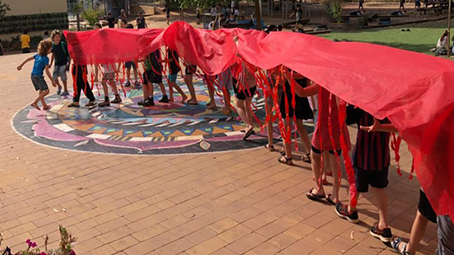
Making a dragon
To make your very own dragon, you will need a cardboard box, crayons, and some paper: you could cut out holes for your eyes and mouth, add on paper teeth and ears, as well as a cardboard tail. You could even make a family dragon, moving it in tandem – the dragon will only move if you all work together.
Proposed Family Activities:
- You may want to ask your child to leaf through the book and look at the illustrations. You could ask them what the sparrows are doing on each page, how they travel to their aunt, and where each of them falls asleep at night.
- Perhaps you could play the following game: take turns pointing at an illustration, while the other attempts to mimic the sparrow depicted.
- You will find many new words in this book! It may be fun to repeat the verbs used to describe the sweet sparrows’ actions. Does your child recognize the names of the musical instruments and modes of transportation?
- Do sweet sparrows fly in the vicinity of your home too? You may enjoy going for a walk around the neighborhood, looking up at the skies, and searching for birds. Can you hear them tweet too?
- Every member of the family can chip in and help run the family home. Many children find joy in the performance of simple tasks. You may want to ask them to set the table for dinner, help clear the plates away when it is over, put away their toys, and more.
- Does your child know the song Hineh mah tov uma naim? Perhaps you could sing and dance together. Or how about setting up a family band with home-made musical instruments? A rattle made of a jar full of dried beans, a guitar made of a shoebox and some elastic bands, and drums made of pots with wooden spoons for sticks will make for a fabulous family performance!
Proposed Family Activities:
- You may want to snuggle up and leaf through the illustrations together. You could ask your child to show you what Toto and La La are doing on each page. What kind of expression does Toto have on his face when La La refuses to share her bucket and spade with him? When are both friends smiling?
- Perhaps you could take some stuffed animals or puppets and act the story out together.
- At the end of the book, Toto and La La “party”. You may want to think of things that make you want to party, and how you enjoy partying with friends.
- Perhaps you would like to discuss the difference between personal items and those that belong to your entire family with your child. You could walk through the various rooms in your house, and identify those items that are “only mine”, such as a toothbrush, versus those who belong to the entire family, like the living room couch.
- Does your child enjoy playing with sand? You could do so at the beach, or even in your own garden or backyard. Use items found in every home along with your bucket and space: plastic boxes, sieves and strainers, spoons, funnels, etc.
- When friends come over, it is sometimes hard to share our toys with them. Perhaps you could decide in advance which toys to offer them, and which to keep aside. You may want to encourage your child to be kind to their friends when they come and visit, and share their games with them. You can later discuss the warm feeling you get when you make friends happy by sharing with them.
Proposed Family Activities:
- You may want to look at the illustrations together, and suggest that your child describe what the chairs turn into throughout the book.
- While reading the story, you may want to pause before the children reach one of the stops, and ask your child to guess, based on the rhyming scheme – where the children will end up.
- Have you ever visited the cities mentioned in the book? Perhaps you could look at the illustrations, and use them to describe the special features in each of the locations. You could also look for more images of these sites online, and compare them with the illustrations in this book.
- Like the children in the story, you could also let your imagination run wild, and transform the chairs around your home into different things. A chair covered with a blanket could become a tent, or a secret cave.
- You could go on a trip nearby. Choose your destination with your child, pack some snacks, invite some friends, and go on an afternoon excursion. You could even have a picnic, so that “by the time you get off the cloud, lunch will be ready”.
- Where is Tel Aviv? And where is Jerusalem? Where are the mountains, the Sea of Galilee, the Mediterranean, and the Red Sea? Perhaps you could open a map together, and mark the places where you and your extended family live, places you have visited, and places you would like to visit as a family.
Proposed Family Activities:
- You may want to snuggle up and look through the book together. Ask your child some of the following questions: did any of the illustrations make you smile or sad? Are you familiar with all the animals in the book? Do you think they all make suitable pets? Try to imagine being able to have an unusual pet: which one would you choose?
- We suggest taking a moment at the page on which the boy and his tiny elephant reach the pet club, and reading the sign out loud. You could discuss what, in your opinion, is the reason why elephants are not allowed into the club. How does that make the boy and his tiny elephant feel? Before you go on reading, you could perhaps hazard a guess as to what the boy would do next.
- How about making a model pet club from a shoebox, and acting the story out together using some puppets. You could enhance the story by making up conversations between characters.
- “Because that’s what friends do” – you may want to share a special friendship you had during your childhood with your child. What did you enjoy doing together? Which games did you play? Who are your child’s friends, and how do they like to spend their time together? Is there a boy or girl from kindergarten who has never been round to your house? Perhaps you could have a gathering of friends of all ages – because all are welcome to the family club!
- You may enjoy making a sign for your child’s bedroom together, and writing a welcoming greeting on it, such as “all are welcome here”, or “welcome, one and all”.
Enjoy reading and discussing the book together!
Proposed Family Activities:
- Perhaps you would enjoy taking a look at the illustrations together: can your child name all the shapes on every page? While reading the story, you may want to pay attention to the shapes’ facial expressions. When are they happy? And what makes them smile?
- You may enjoy using some colored paper to cut out shapes, or playing with a ready-made game of shapes. Together, you could invent other combinations of shapes, and create more things.
- Perhaps you would enjoy going on a search, and discovering the shapes that are hidden in books, toys, and various rooms of your home, such as the square floor tiles of your living room, or the round holes in your sieve.
- You may want to play with building blocks, and use the different shapes to create various artistic structures together. For although it is sometimes nice to be alone, it is so good and pleasant to play together!
- Does your child know the song Hinneh ma tov uma naim (“Behold, how good and how pleasant…”)? Perhaps you would enjoy singing it and dancing together.
- On the final page of the book, the shapes create a windmill together. Has your child ever seen a windmill? You may want to make a paper pinwheel, blow on it, and see how the rush of air moves its wings, just like a windmill.
Reading the illustrations
You may enjoy sitting comfortably, looking at the tender illustrations, and identifying the various ways in which Bear helps his friends. Perhaps you could ask your child to tell you the story by the sequence of illustrations, or imagine what story Bear was going to tell his friends before winter came along. You may also enjoy inventing another Bear story, and illustrating it together.
Acting the story out
You could act the story out using puppets and stuffed animals. Invite the rest of your family to watch the play!
Mutual help
Bear is a good friend, who realizes what his friends need, and helps them. You may want to remind one another how you have helped each other throughout the day. You could choose a family member, neighbor or kindergarten friend, and think together about something they may need a hand with, and how to lend it to them.
Oops, I forgot…
Have you ever forgotten what you wanted to say? You could play charades together. Try to remind one another of shared experiences using familiar songs, hand gestures, or drawings.
Help your toys get ready for winter
You may want to allocate a corner of your child’s bedroom to serve as a winter corner for their stuffed animals. Perhaps you would enjoy using pillows and blankets to make burrows or caves for comfy, cozy hibernation.
What's the story?
Bear turns his experience into a story to tell his friends. You may enjoy making a little book together entitled The Day we have had, and fill it with drawings of the experiences you had today. You could read the book together before bedtime.
Just one more story
Is your child always asking for one more story during bedtime? You could place a small box or basket by their bed, containing some of their favorite books, for your child to look at on their own after saying good night. You may want to go through the basket every once in a while, and select new books with which to fill it together.
Winter is coming
You may enjoy taking a walk in your neighborhood together, collecting colorful fallen leaves, and making prints out of them: place a piece of paper over a leaf, and color over it using red, orange and brown crayons. Hang your leaf prints around the house.
The feelings of others
The feelings of others. You may want to sit close to one another, enjoy the amusing illustrations, and read the story aloud together. When you first read the story, you may want to pause on the page where the passengers of the first boat leave the restaurant, enraged, and ask your child how they think the penguins felt.
The effect of others
The effect of others. One may wonder why the penguins decided not to offer their delicacy to the passengers on the second boat, and decided to eat it all themselves. Perhaps you would like to share with one another a memory of a time in which you had changed your mind following the response of others. When did it happen? How did you feel?
Waiting
Just like in the story, in some situations at home we must wait. Perhaps you could make an hourglass, to facilitate the wait. All you need are two empty plastic bottles. Use a strong adhesive to glue the two bottle caps together. Then, using a heated nail, carefully puncture a hole through the two glued-together bottle caps. Now fill one bottle with sand, recap it with the glued-together bottle caps, and attach the empty one on top of it. Turn it upside down, and see how long it takes for the sand to pass from one bottle to the other.
Tastes & preferences
Tastes & preferences. Do all the members of your household like to eat the same dishes? How do you decide what to eat when you are all sharing a meal, and who cooks? You may want to suggest that your child prepare a menu for the whole family. You could even open a restaurant: who would you invite over to dinner?
A warm scent of cinnamon
A warm scent of cinnamon. You may enjoy making a delicacy together that will spread the warm scent of cinnamon throughout your neighborhood: peel some apples and cut them into thick slices. Sprinkle an equal amount of sugar and cinnamon on them, and place them in the oven. Your nose will be sure to let you know when your delicacy is ready.
About Nurit Zarchi:
Nurit Zarchi was born in 1941 in Jerusalem, and raised in Kibbutz Geva. She has published more than 100 books of children’s literature, poetry, prose, and research.
Zarchi has received many literary awards, among them the Bialik Prize, Yehuda Amichai Prize, Lea Goldberg Prize, Andersen Award for children’s literature, and more. In 2014, she won the Devorah Omer lifetime achievement in children’s literature award.
Among her much-loved books are: Namer Bepijama shel Zahav [A Tiger in Golden Pajamas], Machalat Hagaguim shel Solly [Solly’s Homesickness], Lehitraot BeAntarktika [Goodbye, Antarctica], Doda Margalit Nafla el HaShlulit [Aunt Margalit fell into the Puddle]. You may want to look for these books at home or the library, and read them, both together and separately.
Elisheva's friends come to her aid
Elisheva’s friends come to her aid – they travel, endanger themselves, and are even willing to make an effort and take risks to help her get well. Perhaps you would enjoy remembering a time of need when you were helped by a family member or friend, or else share a memory of a time when you helped a fried in need.
Following the story, you may want to discuss
Following the story, you may want to discuss reality and make-believe, friendship and compassion, breaking and fixing.
Do you have any dolls or toys that need fixing
Do you have any dolls or toys that need fixing? You could look for “injured” games together, and try to fix them.
This book was first published in 1944, and the language used in it is in keeping with the times.
This book was first published in 1944, and the language used in it is in keeping with the times. Did you come across any words or phrases with which your child was not familiar? You may want to ask them who is telling the story, in their opinion – who is the feminine voice that expresses an opinion every once in a while – and what they think of this character.
You may enjoy leafing through the book and looking at the beautiful illustrations
You may enjoy leafing through the book and looking at the beautiful illustrations by illustrator Batia Kolton. You could pick your favorite excerpt of the story, and draw it.
Miriam Yalan Shtekelis wrote many other poems and stories
Miriam Yalan Shtekelis wrote many other poems and stories: Flower for Nurit, The Running Dwarves, Brave Little Danny, and more. You may want to look for them at home or the library.
This is the last PJ Library book you will be receiving. We hope you have enjoyed the books throughout your time at kindergarten and school, and may you read a whole lot more!
Miriam Yalan Shtekelis
Miriam Yalan Shtekelis (1900–1984)
Poet and author Miriam Yalan Shtekelis was born in the Ukraine in 1900. Her father, Dr. Yehuda Leib Wilensky, was a Zionist leader (her last name, Yalan, consists of his initials). Miriam was given a Jewish Zionist education, and immigrated to Israel at the age of 20. She settled in Jerusalem and worked at the Jewish National and University Library (JNUL) for many years. She wrote and translated dozens of children’s poems and stories, and some of her poetry was put to music. Among her well-loved songs are Flower for Nurit, The Soap Cried, Zehava the Doll, and The Rabbit has made a Home. Miriam Yalan Shtekelis was greatly appreciated in life for her writing for children, and was an Israel Prize laureate for children’s literature.

Proposed Family Activities:
- You may want to sit and leaf through the book together. Perhaps you would like to ask your child to look for the ten sailors in the illustrations, and try to identify each one using their description. Did you find any of the illustrations funny? You may want to ask your child to tell the story in their own words, according to the order of the illustrations.
- You may want to stop reading at the point where the fisherman sailor chooses to drill a hole in his cabin, and ask your child what they think will happen next. You could suggest that your child draw a picture of the ship filling up with water and fish.
- In the first few pages of the book, the sailors are depicted with a rope connecting them. What do you think binds the sailors together? What connects you to your family? You may want to tell your children about the expression “All the People of Israel are responsible for one another”, and think about how we each contribute to the wellbeing of others.
- Each sailor on the ship has a role to play, and each depends upon the others. You could take a large sheet of paper and draw a family drawing together in which each family member chooses just one color. In order to create a colorful drawing, the entire family must cooperate, each member using one color and coordinating their actions with all the others.
- What sort of story is created when the entire family writes it together, one part after the next? Probably a very amusing one. You may enjoy starting to write a story, stopping after one line, and letting other family members write the rest in turn, adding more directions, and letting the plot evolve.
- Perhaps you might like to put a jigsaw puzzle together as a family. Once you are done, take one piece out. What does the puzzle look like with one piece missing?
- Each of us can contribute to the growth or collapse of a building. You may enjoy playing with blocks, wooden bricks, or magnets, and building a tall tower together. Once it is up, try removing pieces from it without letting it collapse.
Enjoy reading and discussing the book together!
The following story was inspired by the Midrash in Leviticus Rabba 4:6:
Family Activities
- Get some paper and cut outseven mouse shapes. Ask your children to color them in, using the same color scheme used for the mice in the story. After they’re done coloring, you can glue the mice to popsicle sticks and ask your children to use these figures to tell the story. Decide together how you are going to fashion the figure of the “creature.”
- We all reach mistaken conclusions at times, based on incomplete information. In order to illustrate this point, look through books, newspapers, or magazines to find a picture of something your children aren’t familiar with. You might even draw such a picture yourself. Then, using opaque paper, cover up most of the image. Are your children able to guess what the picture is just from the part that’s showing? Gradually slide the paper cover off, so that more and more of the picture is revealed. At what point do your children “solve” the puzzle and grasp what the picture depicts?
- The mice in the story guess, based on touch alone, what the new “Something” in the pond is. Together with your children, you can make a Touch Box. Take a large container and put several different objects inside. Ask your children to put one hand into the container and try to identify the objects based on touch alone. Afterwards, let them take a turn putting mystery objects into the container. Can you identify what they put in?
- Play a version of the “Blind Cow” game. Cover one child’s eyes with a bandana, twirl them gently about, and then move to another part of the room. Can they find you again using only voice cues?
- Ask your children why they think the white mouse was able to identify the creature, while the others couldn’t. Did your children notice that the white mouse didn’t come up with any new guesses of her own, instead discovering the truth through the information and guesses supplied by the other mice?
- After reading the story, you could work on a jigsaw puzzle. Choose a challenging puzzle with an age-appropriate number of pieces, and work on it together, with each one taking turns adding a piece. Is there a “method” that you use to solve jigsaw puzzles? How do we figure out which pieces go together, and at what point does the whole picture start to reveal itself?
- The white mouse describes the creature using comparisons: “Stable as a column, flexible as a snake.” You can play a comparisons game with your children, trying to describe familiar items in your home using these phrases: “sounds like…” “looks like…” and “smells like…”.
- The mice in the story cannot see; they are blind. Do you know anyone with a physical handicap? Discuss with your children the various assistive technologies and aids for people with limited vision, hearing, or mobility. Look for examples in your area, such as dedicated parking spaces for the disabled, close captioning and/or sign language on TV programs for the hard of hearing, and Braille signage in elevators for the blind. (Israel’s paper currency has been designed in such a way that those with limited vision can differentiate the various denominations by touch.)
Proposed Family Activities
- Your child might enjoy telling you the story according to the series of illustrations. They might want to pick a certain character, and look for it in each illustration throughout the book: Who did they choose? Why that character? What does it like to do in the field?
- You may want to share stories about the changes you have undergone since childhood with your child. Has a childhood puddle turned into a highway? What happened to the field you used to play in as children? Perhaps you would like to look at old photographs together, and compare them to today.
- Is your neighborhood, like the one in the story, expanding and undergoing changes? You may want to visit a construction site together, peek over the fence, and look for tractors and cranes. If tall buildings are being built there, you could try counting the stories together. Or perhaps you’d like to imagine the flowers the new tenants will plant in their gardens, and who they would be. Maybe new friends will move in there?
- Have you ever left a familiar, well-loved place behind? Did the change make you happy? Try to remember and share with your child: How did you feel before the change, and how did you feel once you had gotten used to it?
- The book describes the flowers and greenery typical for each season. You could take a walk with your child, observe nature, and look for flowers. Which flowers have you come across? What color are they? Do you know names of wild flowers? You could also take a picture of yourself with pretty flowers. Have you found a dandelion? Try blowing on it. Have you managed to blow its white “hairs” off and see them fall to the ground like snow?
Family Activities
- You may enjoy looking at the illustrations and looking for other funny things about Chełm. Have you noticed the square wheeled bicycle? Try to guess why the lady sitting on the bench is hiding under an umbrella.
- Did you find this story funny? Do you know other stories about the people of Chełm, or tales about Hershele and Juha? You may want to read them together, or simply tell each other jokes.
- Perhaps you’d like to look out the window and search for the moon. What does it look like? You could draw the moon you saw, and hang the drawing by the window. Then return to the window and look at the moon again several nights later – does the moon look any different?
- You may enjoy taking a nocturnal walk together. Does your street look any different at night? What do you see? What sounds do you hear? You could look up at the sky, search for the moon, be reminded of the people of Chełm, and laugh…
Who likes making crescent-shaped biscuits?
Ingredients:
100g of caster sugar
150g of butter
1 tsp of vanilla essence
1 tsp of lemon zest
2 cups of flour
1 flat tsp of baking powder
4 tbs of ground almonds
Castor sugar for sprinkling on baked biscuits
Instructions:
Mix the castor sugar and butter together in a mixer.
Add the vanilla essence and lemon zest.
Add the flour, baking powder and ground almonds, mixing it all together to form dough.
Take a piece of dough, roll it into a long, thin roll, and cut small crescent-shaped “tubes” out of it.
Place the little crescents on a cooking tray covered with parchment paper, and repeat until all the dough is used.
Bake in a preheated overn set to 175 degrees Celsius for 15 minutes, or until the edges of the crescents begin to turn golden.
Cool and sprinkle castor sugar.
Bon Appétit!
Enjoy reading and discussing the story together!
Family Activities
The north wind and the sun are depicted in the first illustrations of the book. Each one was given different colors. Which colors were used for the sun? Which for the north wind?
It is difficult to see the wind, but its impact can be felt. You may want to look through the special illustrations of the book together, and look for signs that the wind is blowing. While you are reading the story, is the wind blowing outside? Take a look through the window. Can you “see” the wind?
You may enjoy playing dress-up and acting the story out to your family and friends. What do you think the facial expressions of the north wind and the sun would be like? What voices would they have?
At times, in an effort to get what we want, we too might behave like the north wind; and other times we might behave like the sun. What do we look like in “north wind mode”? What do we look like in “sun mode?”
Can you draw a large, joyful sun together, and hang it up so it would remind us to be kind? You may want to write pleasant, heartwarming words next to each of the sun’s rays on your drawing.
You may enjoy exploring the wind’s impact on different objects together: on the table place a sheet of paper, a stone, a leaf, some cotton-wool, and a spoon. Try to blow on them and move them – which one blew away easily? Which one was impossible to move?
Is it always pleasant in the sunshine and unpleasant in the cold? Which type of weather does each of you prefer? What do we like to do out in the sun, and what do we enjoy when it’s cold out?
The North Wind and the Sun is a fable. Do you know others? You may like to read them together.
Haya Shenhav
Haya Shenhav is a poet and author born in 1936 in Kefar Yehoshua, in the Jezreel Valley. Her first children’s book, Mitz Petel (“Raspberry Juice”), was published in 1970, and is a huge favorite among children to this day. Among her well-known and much loved works are Aliza Habarvaza Vehahaverim (“Aliza the Duck and Friends”), and Hippo-Tam, as well as the songs Gveret Im Salim (“A Lady with Groceries”), and Mi Shavar Et Hatzalahat (“Who Broke the Plate?”). In 1985, Haya Shenhav was awarded the Zeev Prize for Children and Youth’s Literature, and in 2004 she was the Bialik Literature Prize laureate. Haya Shenhav lives in Ein Kerem, Jerusalem.
Family Activities
Pit, Pet, Tu is a long and adventure-filled story. You may want to read one adventure at a time, and then ask your child to pick an illustration, and tell you what the dwarves are doing now in their own words.
You could read it together several times, helping your child remember the sequence of events, and join you for the refrain: “Dwarves can do such things…”
You may enjoy looking at the illustration depicting the dwarves turning the mountain into a home. Do you recognize the food? What is your favorite? You may want to prepare one of the dishes the dwarves ate, or plan a back-to-front meal, where you eat dessert first.
One of the dwarves’ favorite pastimes is chatting. They enjoy sitting with one another, and remembering shared experiences. What do you like doing with your friends?
Do you know the tune to the song Meahorey Hahar 1, 2, 3 (“Behind the mountain, 1, 2, 3”)? You could sing it together.
Each time the dwarves transform the mountain into something else – a home, a boat, and even a car. You may also want to engage in a game of “pretend”, and turn familiar objects into other things using your imagination. You could pick a different object each time, and tell each other what it has turned into.
Would you like to play with dwarves? You may enjoy drawing little dwarves on toilet paper rolls, popsicle sticks, old socks, or rolled-up paper… You could make three dwarf puppets, and use them to tell the story.
Pit, Pet, Tu is the last PJ Library book you will be getting this year. Enjoy reading it, and also reread your favorite PJ Library books from previous months. Perhaps this time you could let your child read it to you… See you next year!
"Oh No!"
David Hyde Costello chose to describe the distress of the animals in the pictures. You may want to look at the illustrations together, and ask your child to explain the various problems in their own words. You could read the story together, and take turns to say “Oh No!” and explain why the animal is distressed. Each time the other can answer “I can help!” and describe the solution. Don’t forget to thank each other every time!
Acting the Story Out
You can choose puppets or stuffed animals with your child, and use them to act out the story. You may also want to make the animal characters yourselves out of card or cardboard, attach them to popsicle sticks, and put on a play.
A Giving Circle
Your children will probably be delighted to discover that the little duckling who was lost at the beginning of the book was able to help the mighty big elephant! No one is too little to help, and sometimes, the smaller creatures actually have an advantage. You may want to remember a time when your young child helped solve a grown-up’s problem (like getting something that fell behind the sofa, or under the table, out).
Anyone can Help
Every day, all of us, no matter how old we are, could use some help, and also help others. You may want to think together of all the people who help you in your everyday life – siblings, friends, the kindergarten staff, and neighbors. Perhaps you would enjoy establishing a family tradition whereby, at the dinner table, or before bedtime, you each recall the help you extended and received that day.
What Happens at the End of the Story?
You may want to take a look at the last illustration in the book, and try to guess what each animal does in order to help the lost duckling.

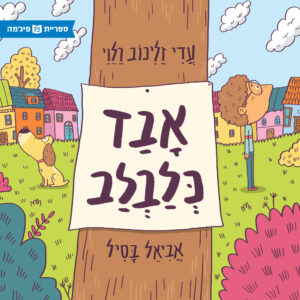 Lost Puppy
Lost Puppy 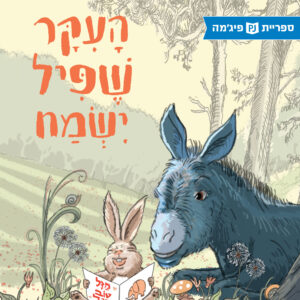 Making Elephant Happy
Making Elephant Happy 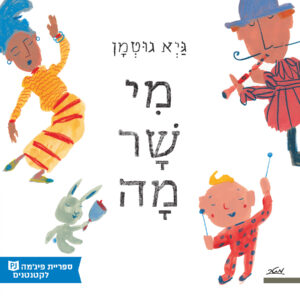 Who Sings What
Who Sings What 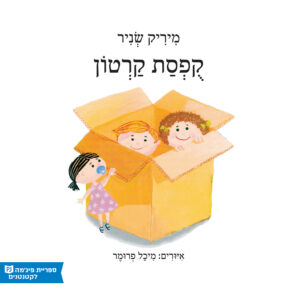 A Cardboard Box
A Cardboard Box 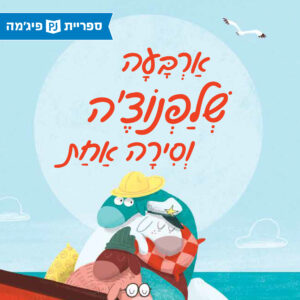 Four Shlofnoche in a Boat
Four Shlofnoche in a Boat 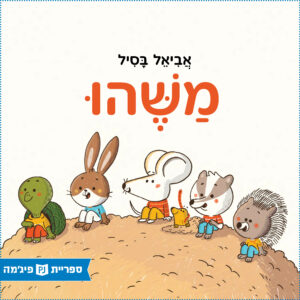 Something
Something 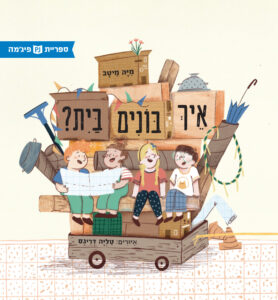 How to Build a House
How to Build a House 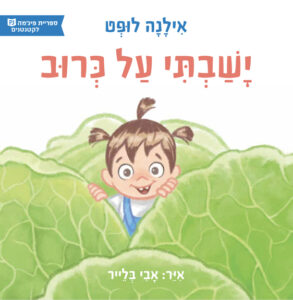 I Sat On a Cabbage
I Sat On a Cabbage 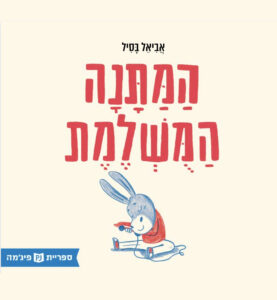 The Perfect Gift
The Perfect Gift 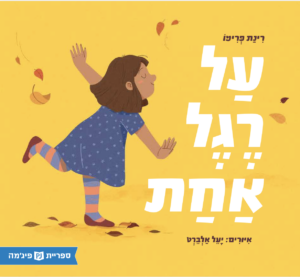 On One Foot
On One Foot 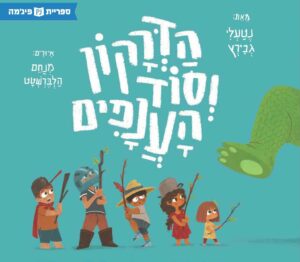 Dragonsticks
Dragonsticks 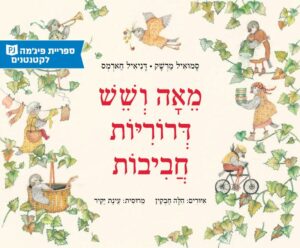 One Hundred and Six Sweet Sparrows
One Hundred and Six Sweet Sparrows 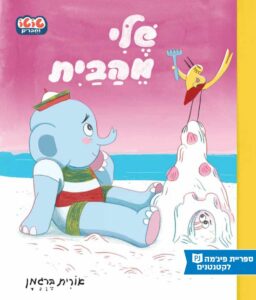 Toto & Friends: Mine!
Toto & Friends: Mine! 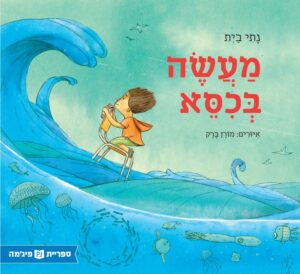 About a Chair
About a Chair 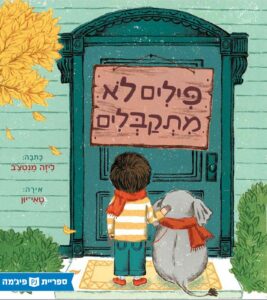 Strictly No Elephants
Strictly No Elephants 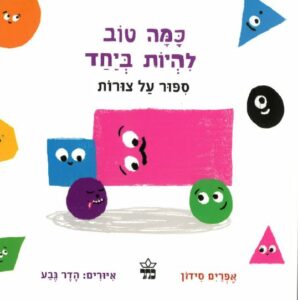 Friendly Shapes
Friendly Shapes 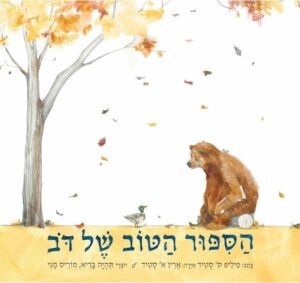 Bear has a Story to Tell
Bear has a Story to Tell 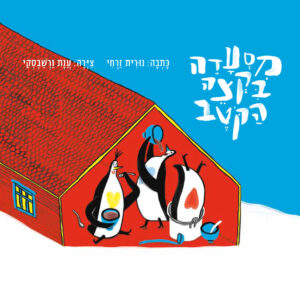 The Cooking Penguins
The Cooking Penguins 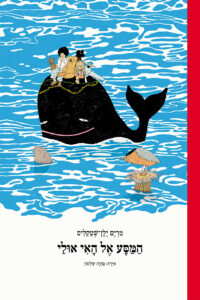 The Journey to the Island of Maybe
The Journey to the Island of Maybe 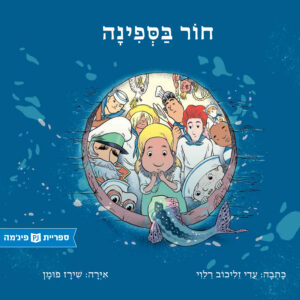 A Hole in the Boat
A Hole in the Boat 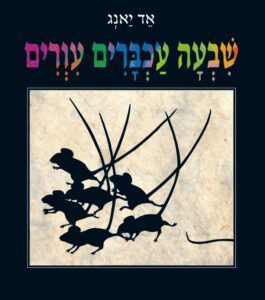 Seven Blind Mice
Seven Blind Mice 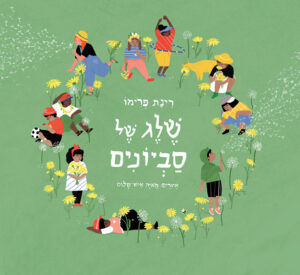 Snow of Dandelions
Snow of Dandelions 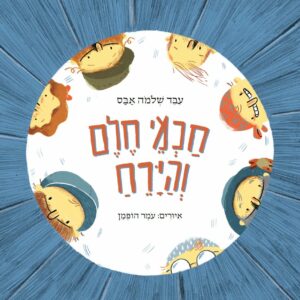 The People of Chełm and the Moon
The People of Chełm and the Moon 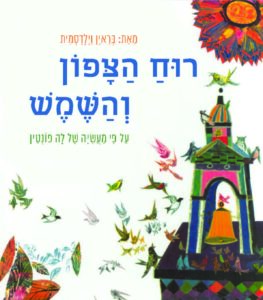 The North Wind and the Sun
The North Wind and the Sun 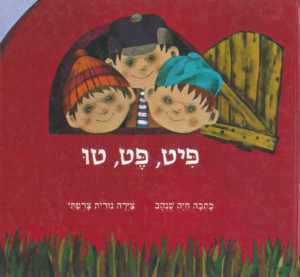 Pit, Pet, Tu (“Chit, Chat, Chatter”)
Pit, Pet, Tu (“Chit, Chat, Chatter”) 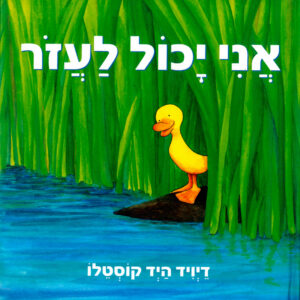 I Can Help
I Can Help  הַמְחָזָה
הַמְחָזָה